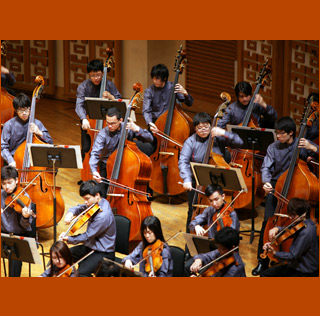 |
| Hopeful tune: Asia’s ambitious youth look to the future with confidence |
The rising generation of Asians has an expansive view of a broader Asia. They support the pragmatic, incremental pro-market policies that have underpinned Asia’s spectacular growth over the past half-century and want to build on these to knit together the region. In short, they want to see more regional cooperation and integration. “Rather than thinking about our own personal domains, it’s time to think on a greater scale: the scale of countries, the scale of a continent,” says Pakistan’s Khawaja Ali Zubair.
| The Tiger Cubs’ grandparents came of age at a time of war, revolution, and chronic poverty. |
With a handful of exceptions, most Asian countries have settled their existential threats and focused on economic and political development. For the first time, many nations in the region have had an opportunity to think about a larger project of collective identity, and many of their essays call for greater cooperation to resolve the economic, political, immigration and financial challenges that affect the region. Young Asians also want to build on the progress that has been made. “Asia should set as its shared objective the attainment of prosperity,” writes Marikit G. Manalang of the Philippines.
The Tiger Cubs grew up in an era of unusual peace and unprecedented prosperity. Theirs has been a time of reform, not only in China and India but around the region. They don’t remember Maoism or the Soviet Union. But they know the internet and satellite TV and live in a world of always-on information. All but the poorest villagers have an idea of a world of prosperity and freedom. They have an idea of the global standard, whether it’s the latest mobile phone or government policies. And they see no reason why their country can’t aim for that standard. “There is no doubt,” writes India’s Rohit Pathak, “that the coming decade will be Asia’s.” But the biggest single stumbling block is poor governance. “The biggest hurdle in the way of good governance is corruption,” Pathak adds, proposing a range of technological and political reforms ranging from transparency and accountability in government, a free media and, above all, harnessing the power of information technology through an expanded version of India’s embryonic Unique Identification Number system.
| Tiger Cubs feel entitled, but it’s less a sense of entitlement than an expectation that life is getting better. |
Instead, most of the Cubs want to work through institutions. They believe in the power of governments, and of international bodies, to improve the world.
This belief in states and in regional and multilateral organizations underpins the thinking of many of those who wrote about Asian identity. The need for an Asian currency union was floated, although the writer recognized that this would take decades. Other contestants singled out Hong Kong and Singapore as places where regional organizations could flourish, given the high standards of governance present in both cities.
Economic development is the most important element pulling the region together. The contest used the World Bank’s definition of young professionals and was open to Asians born after 1978. They were young during the final years of the Cold War, and only the oldest would remember the Soviet Union. The Asia-Pacific Economic Cooperation was formed in 1989, and whatever its limitations, APEC heralded an attempt to build ties across the region. The World Trade Organization was established in 1995, and China joined the WTO in 2001. Bilateral trade agreements have mushroomed – in east Asia alone the number has gone from three in 2000 to almost 50 today. The China-ASEAN free trade agreement is the world’s largest in terms of the population it covers. These institutions implicitly underpin the notion of regional and international agreements as a positive force.
Decoupling from the West appeared as a theme, but not as a rancorous call. Instead there is recognition that as Asia becomes more developed it needs to look close to home for solutions and continued economic growth. The old East-West or North-South divides don’t seem to resonate for this generation. “The key is not to disengage [from the West], but to reduce reliance, diversify, and find Asia’s niche,” writes Loh Su Hsing.
| Tiger Cubs recognize that as Asia becomes more developed it must look close to home for solutions. |
Given this diversity, it’s not surprising that many fears remain. India makes its neighbors nervous. Terrorism and low-level conflicts, especially in South Asia, are an on-going issue. Tensions remain between Muslim communities and their neighbors. China makes writers throughout the region uneasy; there is real uncertainty about its intentions. Still, as Singapore’s Jesslyn Zeng writes, for all the fear about China, “the greatest nightmare will not come if China rises but if China does not rise.”
Young Asians anticipate a future increasingly home-grown, pragmatic, focused on economic and social development. It won’t be anti-West, but it won’t slavishly ape the West. They don’t have a chip on their shoulders about the era of colonial rule and its aftermath. Theirs is an increasingly proud Asia that will slowly build its own institutions.
.........
Yale Global

Comments